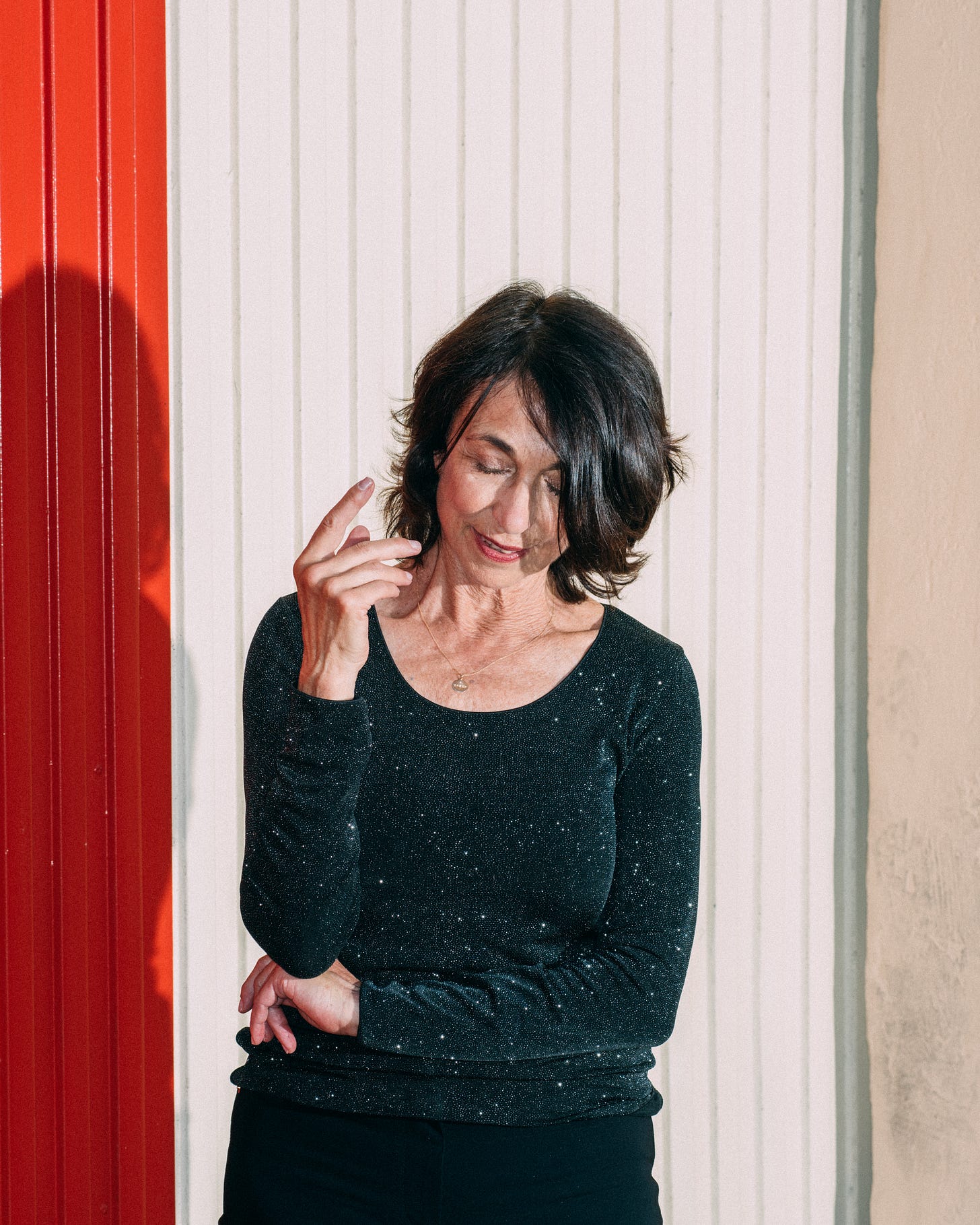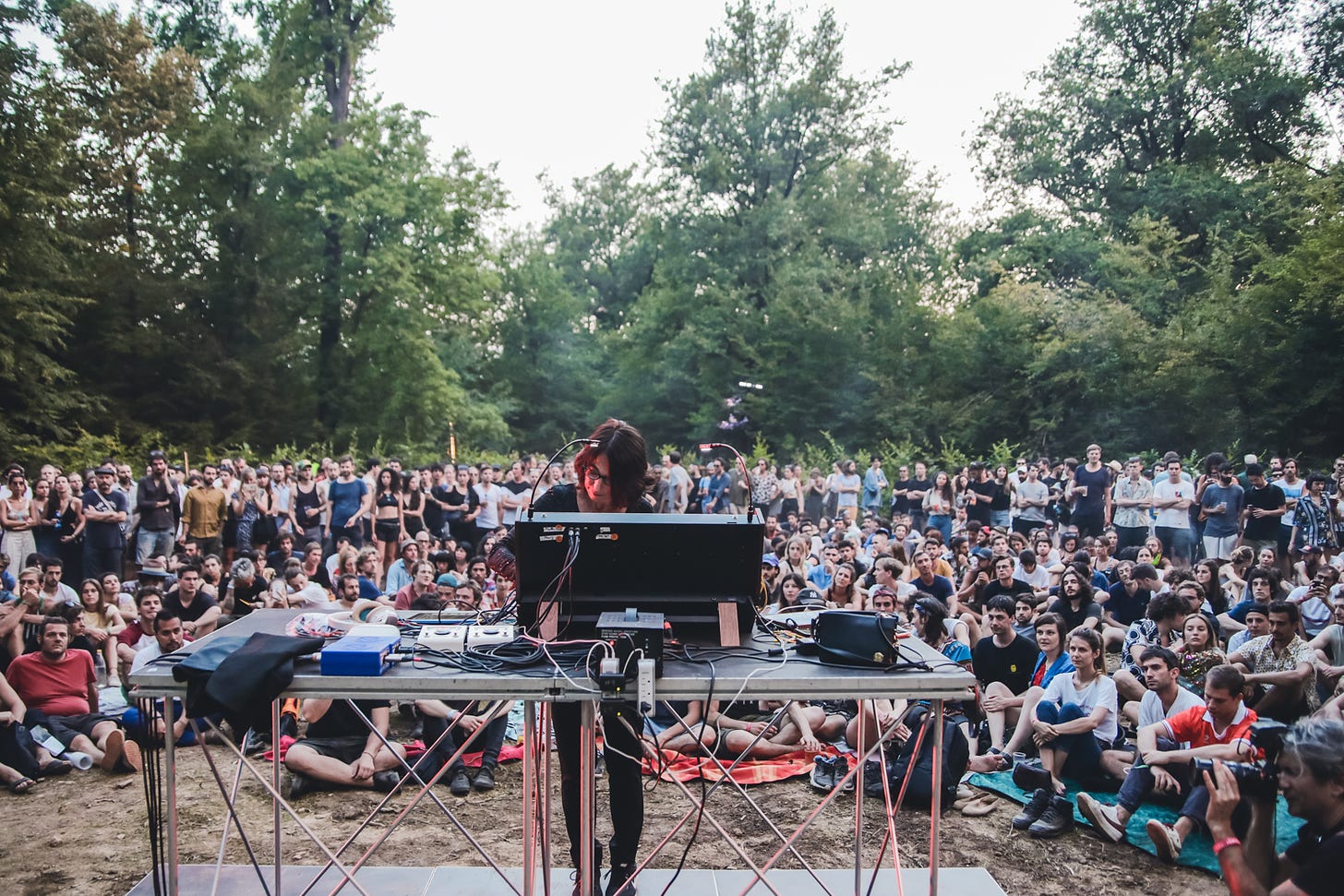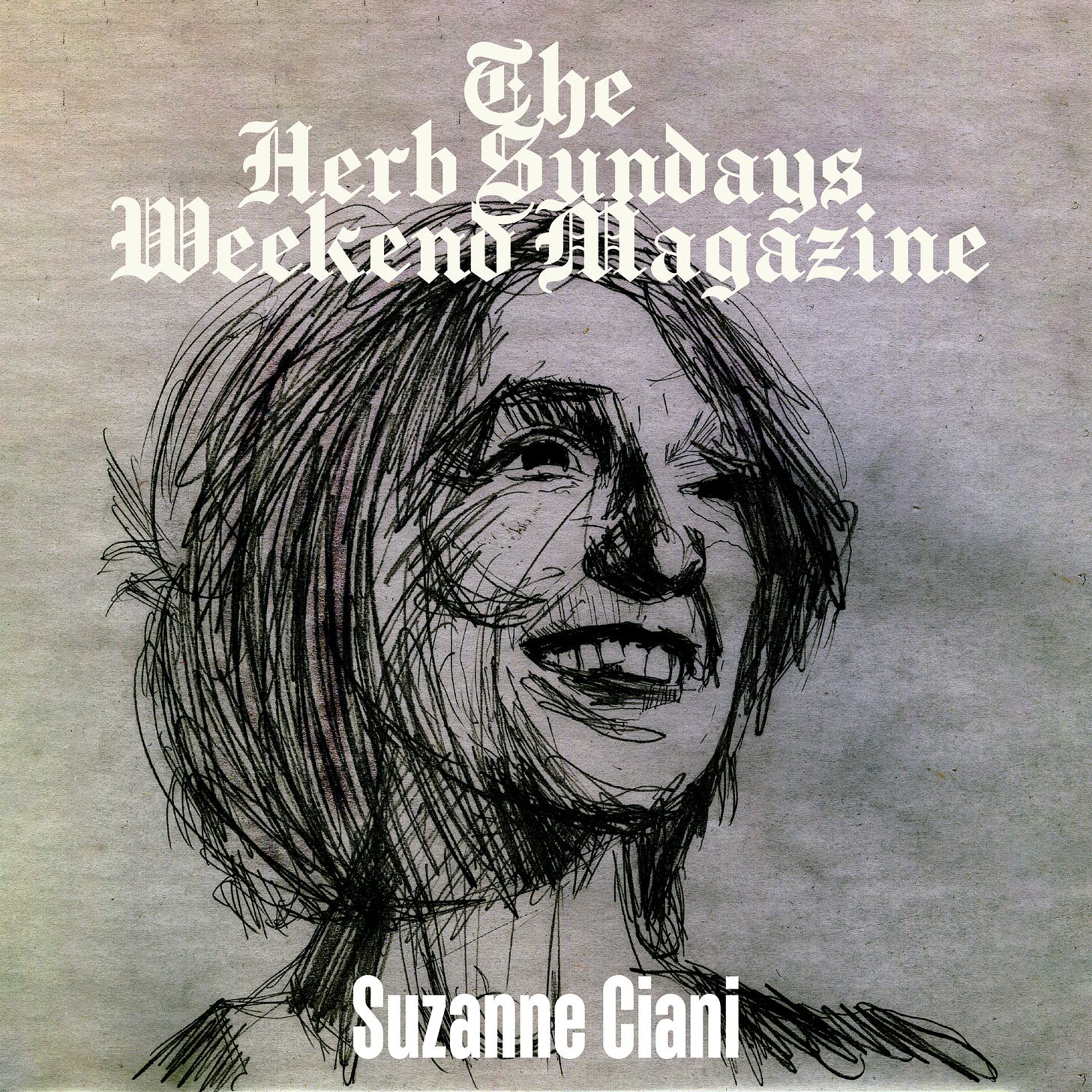The Herb Sundays Weekend Magazine: An interview with Suzanne Ciani
The acclaimed musician and synthesist on innovation, technology as freedom, and how the trends of now have roots in her past.
The Herb Sundays Weekend Magazine: Suzanne Ciani
Design and illustration (from a photo by Dan Wilton) by Michael Cina.
The music of Suzanne Ciani (website): Apple / Bandcamp / Spotify / Tidal / YouTube
“It turns out that a lot of women embraced technology as a form of freedom. We weren't allowed to interface and fit in with the established systems and power systems, and technology gave us freedom and control. You could do it all yourself, and that was part of the excitement.”
Suzanne Ciani is a five-time Grammy award-nominated composer, electronic music pioneer, and recording artist who has released over 20 solo albums. Her work has been featured in films, games, and countless commercials including providing the voice and sounds for Bally's groundbreaking Xenon pinball machine, creating Coca-Cola’s “pop-and-pour” sound and has carving out a niche as one of the most creatively successful composers in the world. A Life in Waves (official site/DVDs/Vinyl), a documentary about Ciani’s life and work, debuted at SXSW in 2017 and is available to watch on most digital platforms.

I was honored to speak with Suzanne a few months ago over Zoom and am happy to share this condensed transcription with you. Her work in humanizing and normalizing the use of electronics in music as well as bringing, in her own words, a “sensuality” to this space, makes her a huge inspiration to myself and many others.
On her audience
Suzanne Ciani: I’m outside of San Francisco, on the coast. I came out here for a year 30 years ago, and that's what happens.
Sam Valenti: I mean, Northern California is a special place. How have the shows been? You've been playing some big ones recently.
SC: Yeah, this is true. They're getting bigger and bigger. And you know, I'm just enjoying it. As long as I feel engaged, enthusiastic, and caring about it, I really am enjoying it.
SV: Do you think there's like a new generation of people discovering your sound? Or what do you attribute the growth in audiences to?
SC: Yeah, well, my, my audience is young. That's wonderful for me because I was their age when I started doing this thing, right? But at the time I did it, which was in the late ‘60s and ‘70s, there was no audience. So for me, this is like a closure of some kind, you know, where I just couldn't be more thrilled to have an audience that actually understands what I'm doing.
SV: Could you have imagine that this audience would be there?
SC: Never, and I think it is really an anomaly. And what it took, as far as I can judge, is that the kids put the brakes on and started to look backward. And it was about time I guess that it happened, because the promise of technology was always to go forward, that things were gonna get better and faster and this and that. And that became, you know, a marketing tool. And the kids just said, “Wait a minute, you know, we want LPs, we want cassettes, we want analog, we don't want to sit at a computer all the time” you know. So it took a while for me because I'm I live out here and am kind of isolated. And I wasn't paying attention. So I was really shocked when I came out and I played a concert was 2015 or whatever, and there was an audience. As I said, I was living under a rock. I didn't know it was going on.
SV: That's fascinating. I guess you're not you're not on social media every day and didn't see all the fans trying to get to you.
SC: Yeah, this is true. I still don't go on social media much, so my experience is primarily you know, in the moment. I go to a concert, I meet the kids. My job in many ways is to connect them with the legacy, the origins, and the beginnings of this analog and modular world.

On Innovations, then and now
SV: Obviously everyone's seen the clips of you on Letterman, and the really great behind-the-scenes on how you scored the Xenon pinball machine. How do you feel looking at those now? Obviously, you were a futurist and people saw that you were bringing something new to the table, but there's also sort of an awkward comedy element with Letterman not knowing what to do with it. Is it charming or frustrating to look back?
SC: I see that young woman, who I was, and my drive and my energy, and my conviction. You know, my real sense that what I was doing. In a way, I was sad that people didn't understand what I was doing, and I did develop a kind of attitude that I needed to educate the public. And I'm still in that role right now. Because believe it or not, you know, some of the things we did in the ‘60s and early ‘70s, you still can't do now. You know, the tools aren't readily available any more.
SV: What was it about the time period of the ‘60s and ‘70s? What did you think, besides this the newness of the technology, led to these movements? Was it cultural open-mindedness? Or what was the sea change that you were riding to be able to have this kind of innovation in the communities you were in?
SC: It turns out that a lot of women embraced technology, as a form of freedom. We weren't allowed to interface and fit in with the, you know, established systems and power systems. And technology gave us freedom and control, you could do it all yourself. And that was part of the excitement. But also, I just naturally lived in a place that was, you know, 10 years in the future. It just it was frustrating, because I thought, “No, this is here. This is happening. This is what it's about.” And it was a slow process to, you know, close that gap. And that's why I'm so excited now because, in many ways, it’s what I wished for back then.
SV: Obviously, you represent the instruments of a certain era but is there any new technology that speaks to you? Obviously, there is a lot of conversation around AI. How does the current wave of offerings speak to you, if at all?
SC: Well, you know, in the, in the late ‘60s, I went to Stanford at the Artificial Intelligence Lab. And I had to get up at five in the morning and get there, you know, and we had from like 6 am to 8 am to use the computers, and they were already doing this was very early AI. They were already designing programs that would write music. So this is nothing new, right? I mean, it's, it's a concept that goes way back, you know, 50 years, or more. So that doesn't surprise me.
But one of my unfinished visions was spatial sound. So Buchla, from the beginning, worked in quadrophonic. So spatial movement was one of the musical parameters that you controlled just the way you control the pitch or the amplitude. You control the movement. And I'm very excited now to see people interested again in immersive sound. The first time it happened in the ‘70s, we had quadrophonic LPs, there was this consciousness of multi-channel music, but it failed. It failed because there was no content. And I've worried today that the same thing could happen.
Now we have, you know, spatial systems people have, you know, have 5.1 systems for their film watching but it's not the same as using spatial movement of sound as a musical parameter, and that's one I'm trying to show how that works. So it's not post-production, you know, where you say, Okay, “now I'm gonna put this sound here, with the sound over there.” It’s movement integrated with the music and only electronic music has that naturally. So I've been doing these performances now for what, seven years? And it's worked, you know, I get them to put up the speaker systems. But I think, you know, in the future, and I don't know what this is, but the missing link here is that we need theaters that allow this music.
On home listening and inspirations
SV: I ask what people listen to at home, especially often people like yourself who make music, and I think it was classical that was the main work you’ve said that you listened to consistently. Is there a sort of happy place you go to musically for your listening preferences?
SC: You know, I find myself I have this little Alexa speaker. course if I say her name, now she's gonna wake up [Sam’s note: this exact thing happened when chatting with Kevin Kelly]. You know, one of my go-to pieces is Handel's Messiah and the other is Bach’s Goldberg Variations with Glenn Gould playing. Those are my go-to’s. I also play FIP radio, which is a French station that is very eclectic and I enjoy that. But these two pieces, and I used to say, you know, they always ask you if you had to go to an island, what would you bring with you? And of course, mine was the first recording that Glenn Gould did of the Goldberg Variations.
Oh, and Roxy Music's Avalon, a perfect, perfectly engineered album. But I listened to new things too. Because when I'm out touring, I get sent stuff by people and enjoy listening to it. But my deep connective musical connections are those songs are those pieces. And there's something you know, we all have the music that grounds us and connects us.
SV: It’s like a fragrance that you wear every day right? It just works for you.
SC: Chanel N°5
SV: Exactly. That's great.
On now
SC: I have to make sure that the Buchla keeps working [Sam’s note: Prob uneccesary to explain, but old synths can be finicky and require maintenance or parts no longer made] , you know, I live a fragile life. Because if anything happens to this machine…
SV: It's so wild, how, in a world of abundance and technology, there's still fragility with these instruments.
SC: Yeah, and it's very custom. I've been trying to make a backup system, but it's just, oh, my gosh. They're all custom. Which reminds me… [changes tone] Okay, I just got word that one of the modules I need is being made.
SV: It’s like you’re running our laboratory. You gotta keep up with your gear, and your inventory. It's quite a fascinating life.
SC: It's the one I'm used to. [laughs]
Suzanne's next live performances will be at MoMA in September. Ciani will perform Improvisation on Four Sequences on the Buchla 200e, presented in quadraphonic sound, for a spatial experience. Her next release is a collaboration with Jonathan Fitoussi that comes out this fall. I also recommend the Sisters with Transistors (Vimeo/Paramount) documentary for more about Ciani and her peers.




